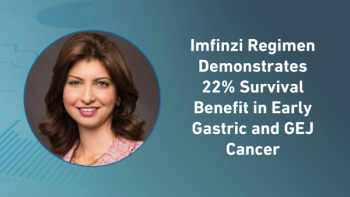
- Applied Clinical Trials-03-01-2024
- Volume 33
- Issue 3
Seeking Solutions for More Representative Populations
Exploring a human-centered, holistic approach for equitable trial outcomes.
As an industry, it is our collective goal to drive inclusive diversity in clinical research and in our healthcare systems to provide better, more equitable outcomes and lifesaving therapies to patients. People-centred regulations are more prevalent around the globe, driving inclusive research and transforming the healthcare ecosystem to provide more equitable outcomes. For pharmaceutical and biotechnology organizations, representative trial populations in clinical research are important in driving equity because inclusive research generates richer data, painting a fuller and more accurate picture of the treatment landscape, as well as the safety and efficacy of these therapies, in the real-world populations that need it most.
In this article, we will review and discuss how a holistic approach can support more representative populations for better outcomes.
Holistic and context-specific
The first step is to define what “diversity” and “representative” means for your clinical trial population, which requires an intelligent analysis of the disease population and intentional commitment to the results. Using prevalence-to-participation ratios (PPR) and participation consumption ratios (PCR) will help identify the appropriate target populations. It will also illuminate opportunities to target underserved and underrepresented populations. For example, heart failure is equally prevalent in men and women, yet women participate in heart failure trials at about half the rate of men, for a PPR of 0.5.
Additional considerations include pathophysiology, the social determinants of health (SDOH), and disparate impacts of the disease across communities and demographics. It is also important to note that the existing epidemiological data can be incomplete, as it often encompasses only those communities that have historically had the most access to healthcare and clinical research participation. Evaluation of these components guides diversity goal-setting for the specific context of each asset/disease throughout its development journey, adjusting for each phase of the journey through post-marketing research to reflect real-world patient populations.
Once defined, diversity goal achievement is driven by detailed operational action planning that is aligned with milestones and delivery expectations. This approach is both time- and cost-effective by taking action at key timepoints informed by patient perspectives to achieve population inclusion and retention goals—and ultimately, overall success.
Healthcare intelligence increasing access
The explosion of healthcare technology and data availability has created a wide range of tools and potential applications across the clinical research continuum, from tokenization to artificial intelligence (AI) and machine learning (ML) to digital health technologies. These innovations are laudable on their own, but the real benefit is the way they can be used to improve healthcare equity and patient outcomes.
AI is being used to survey and assess real-world use of similar assets to identify which eligibility criteria are relevant to real patient populations. It can calculate hazard ratios of the inclusion/exclusion criteria, identifying opportunities to open the criteria to a broader range of patients without impacting the safety. Despite the constant evolution in the healthcare landscape, the industry often recycles eligibility criteria that may now be based on outdated restrictions. Consider oncology trials where standard criteria exclude HIV-positive patients, though contemporary medicines allow people living with HIV to have longer lives with nearly undetectable viral counts. By re-examining existing criteria, we can open trials to more patients.
AI is also helping us reach the right patients. When the appropriate data is leveraged, AI and ML can recognize patterns within the clinical research ecosystem and provide study teams with insights into which sites will be most likely to recruit patients based on their relative connectivity and proximity to target populations. We can also overlay data sources into site-selection processes to understand the diversity of investigator staff at sites and their surrounding communities. Tapping into this network with patient access in mind has had significant benefits for ICON studies, improving demographic- and geographically-aligned site selection, recruitment rates, and start-up timelines.
Site-level support
In general, effective recruitment plans should strategically build reliability and consistency across the study but remain agile enough for hyper-localized approaches. There are several considerations to ensure maximum site productivity, ranging from catchment, training, and current competency to understanding future capacity needs. Specific support with scientific or regulatory relevance can increase a site’s commitment to engage certain populations or perform study tasks, while training on cultural competency and implicit bias can help break down barriers that might impact patient willingness to participate/remain on trial or limit patient referrals.
We have seen positive results from deploying site engagement and clinical trial liaisons who tailor their approaches to sites by optimizing and enabling buy-in to the scientific pursuit of the data interactive response technology would provide, as well as recruit, enroll, and support sites and patients. The human aspect of these roles also helps keep healthcare professionals (HCPs) aware of the relevance the study data will provide, build relationships, and generate scientific interest, which makes HCPs more likely to identify and ask their patients to participate. Technology and AI can be applied to site-management processes to support risk management of potential sites that may have less experience with research or in the specific indication.
A multilayered patient recruitment approach
Engagement is key to recruiting appropriately diverse trial populations, and greater lengths should be taken to meet patients where they are through the myriad channels. A multilayered approach can capture more opportunities to connect with patients in meaningful ways that would support their unique participation journey. Patient advocacy organizations (PAOs) are a valuable channel for connecting with patients, and the power of relationships with PAOs is an area of increasing interest. However, many established PAOs are also looking to increase diversity within their spheres of influence and new organizations are emerging to provide support for populations that were previously less engaged or underserved.
At the community level, we encourage sites to set goals and engage more within their local communities to build non-transactional relationships and invest in disease/community awareness. Site-specific relationships, including the presence of staff that reflect the community demographics or mobile units that can reach patients where they are, can bring “sites” to patients and expand access for underserved communities.
Creating clinical research access points for patients through the multilayered approach should also leverage targeted, culturally sensitive omnichannel messaging that engages and allows patients to have empowered conversations and make informed decisions. Analyzing ever-deepening datasets also allows us to identify how and where patients prefer to be engaged, enabling educational campaigns to be ethnographically customized for more effective impact.
Patient support services
Representative trial populations generate richer data for real-world application, but this relies on participation. Infusing patient perspectives and analyzing key datasets, including SDOH, can pinpoint barriers to participation that can then be addressed through tailored patient-support actions. Assessing the kinds of tools, support, flexibility, and resources that will have the most impact on limiting burden and boosting patient engagement allows us to design patient-centric trials that balance feasibility with personalized optionality. These solutions create options that facilitate improved patient access and retention—and ultimately, improved patient experiences, better data, and more meaningful outcomes that have been informed by the communities in need.
Human-centric
Meeting diversity and inclusion goals in clinical research requires informed analysis, patient centricity, and strategic solutions infused throughout the clinical trial process. Technology now offers a multitude of opportunities to leverage tailored solutions that can mitigate barriers and help center the voices and experiences of underrepresented patients. The benefits of diverse populations and representative trial data extend to commercial and therapeutic relevance, though, most importantly, it supports the foundational ethical tenets of clinical research by more fairly distributing burden and benefit with patients.
Tinaya Gray, Global Head of Diversity & Inclusion in Clinical Trials, ICON plc
Articles in this issue
over 1 year ago
New Legislation is Driving Diversity in Clinical Researchover 1 year ago
A Need for Actionover 1 year ago
The Missing Puzzle Pieces to Trial Representativenessover 1 year ago
eCOA Libraries: An Untapped Opportunity?over 1 year ago
Calling Out ‘Check-the-Box’ Patient Engagementover 1 year ago
Beyond the Iron Triangle: Behavioral Science Strategiesover 1 year ago
Changing the Face—and Faces—of Clinical Researchover 1 year ago
Diversity in Clinical Trials: Strategies and ChallengesNewsletter
Stay current in clinical research with Applied Clinical Trials, providing expert insights, regulatory updates, and practical strategies for successful clinical trial design and execution.






.png)



.png)



.png)
.png)
